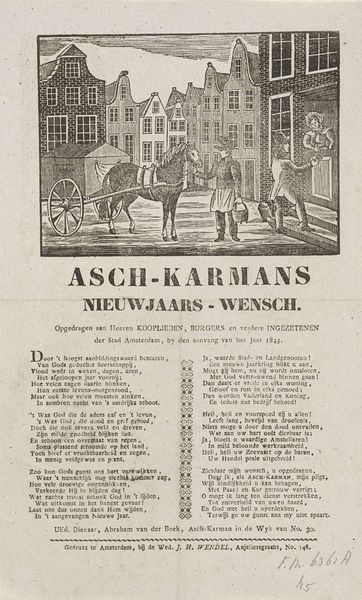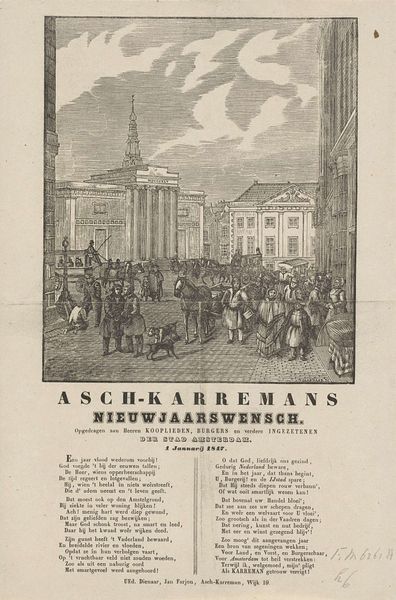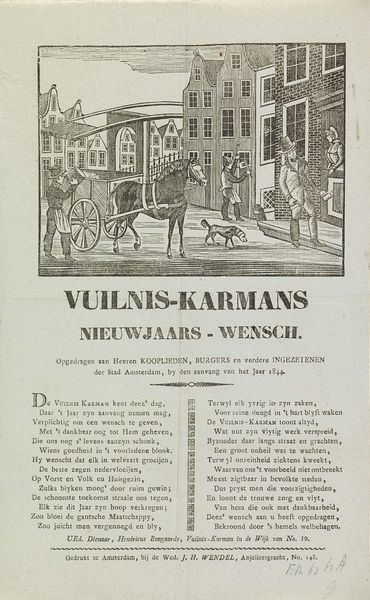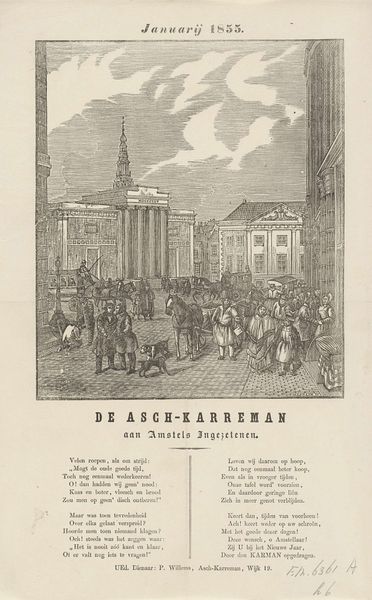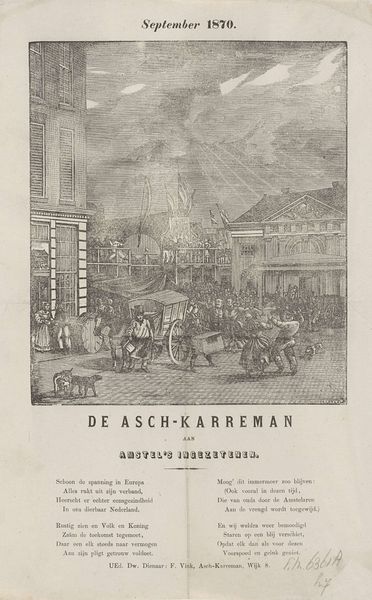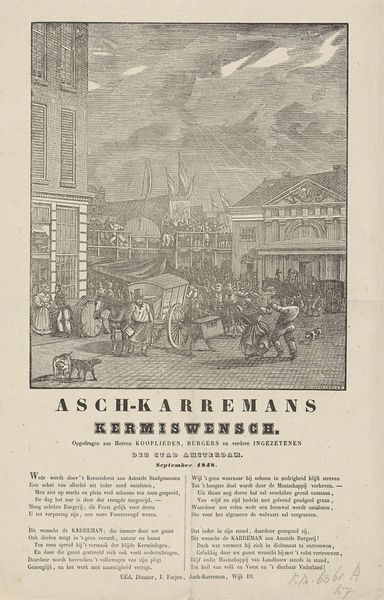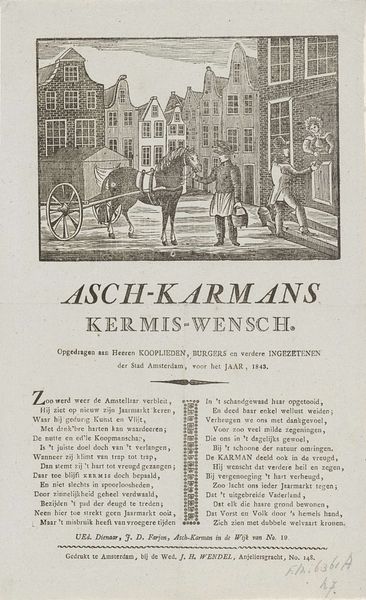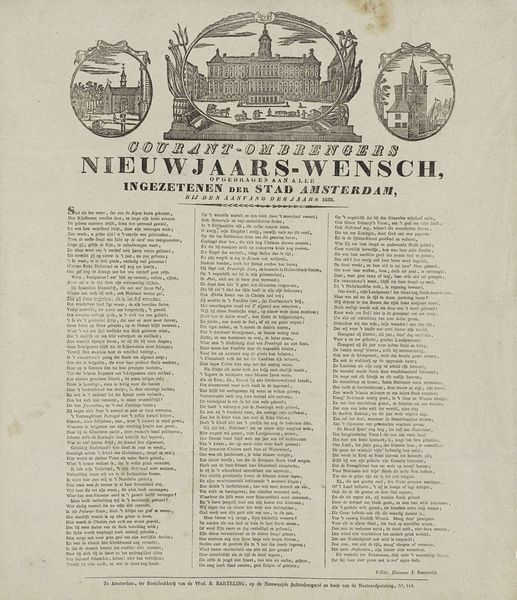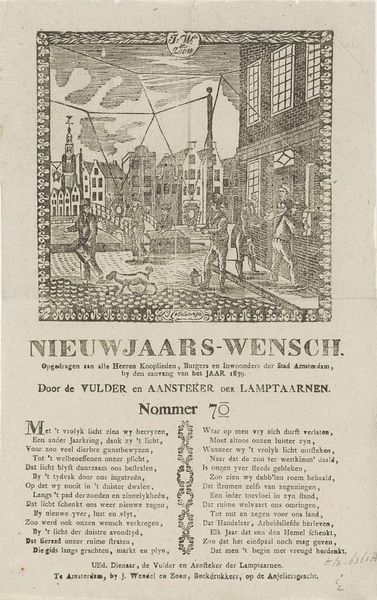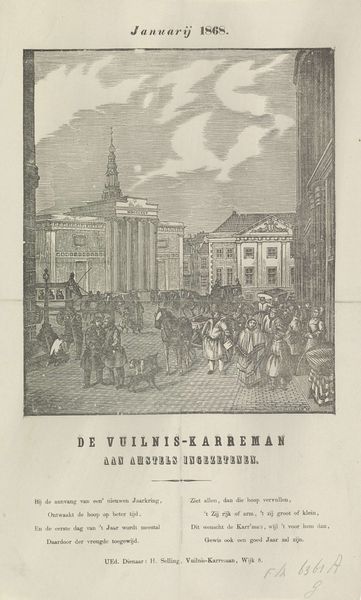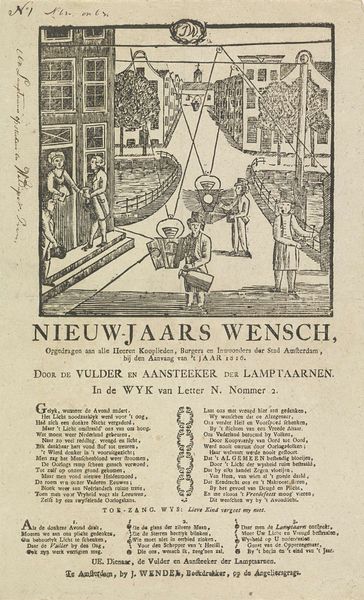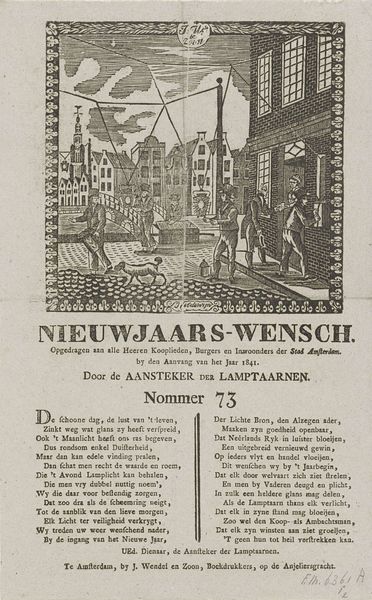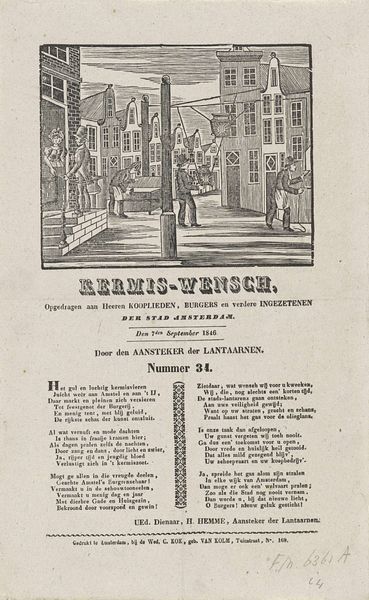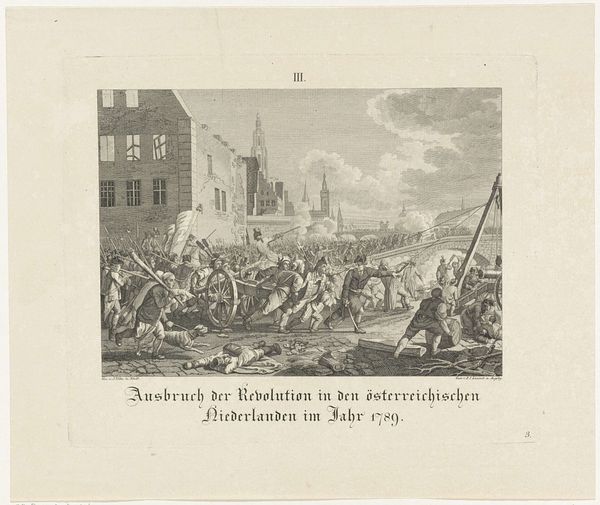
Nieuwjaarswens van de Amsterdamse askarrenmannen voor het jaar 1846 1845 - 1846
0:00
0:00
print, engraving
# print
#
script
#
cityscape
#
genre-painting
#
engraving
#
historical font
Dimensions: height 357 mm, width 238 mm
Copyright: Rijks Museum: Open Domain
Curator: Looking at this print, I'm immediately drawn in by the sheer density of detail! The cityscape, the crowd, the text below—it feels bustling and lively, doesn't it? Editor: It certainly does. What we have here is an engraving from 1845-1846 titled "Nieuwjaarswens van de Amsterdamse askarrenmannen voor het jaar 1846." In English, that translates to "New Year's Wish from the Amsterdam Ash Cart Men for the Year 1846." The print is currently held at the Rijksmuseum. It's essentially a New Year's greeting commissioned by the ash cart men, dedicated to the merchants, citizens, and residents of Amsterdam. Curator: Oh, I love that! It feels so personal. A New Year's card, basically, from a group of…well, sanitation workers. And that poem, underneath the image! Did everyone just randomly write in verse back then? Editor: Not quite random, but it does reveal something about the social and political function of art at the time. See how the text at the bottom attributes it to "J. D. Farjon, Ash-Karman"? The poem’s referencing trade, prosperity, and civic pride and explicitly invokes Amsterdam’s global significance. These "ash cart men" weren't just collecting refuse, they were active participants in constructing the city’s image. Curator: I see your point. But looking past the context for a second, can we admire that rendering? I imagine a whole process—sketching, carving that image onto a block, and then printing. Editor: And the perspective! Notice how the eye is drawn upwards, both by the architectural lines of the buildings and by the hopeful, almost aspirational tone of the verse. It situates Amsterdam as not only a physical space but also as an idea. In other words, a place striving towards a bright, utopian future of expanding commercial trade. Curator: But even while pushing Amsterdam up into the sky in theory, it grounds itself in something simple. In the hopes of hard-working laborers, and how much their wishes really echo everyone else's. Maybe art isn’t so much about escaping our struggles but seeing each other through them? Editor: Exactly. These kind of communal wishes and everyday labor have the potential to become radically democratic when centered on those on the margins of power. This print preserves not only a place, but a moment of civic engagement through collective hopes.
Comments
No comments
Be the first to comment and join the conversation on the ultimate creative platform.
